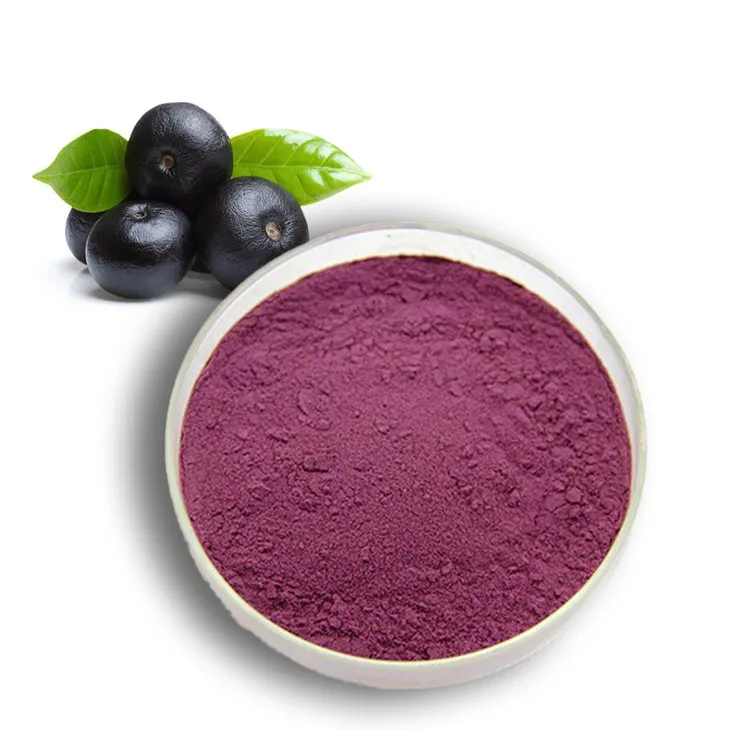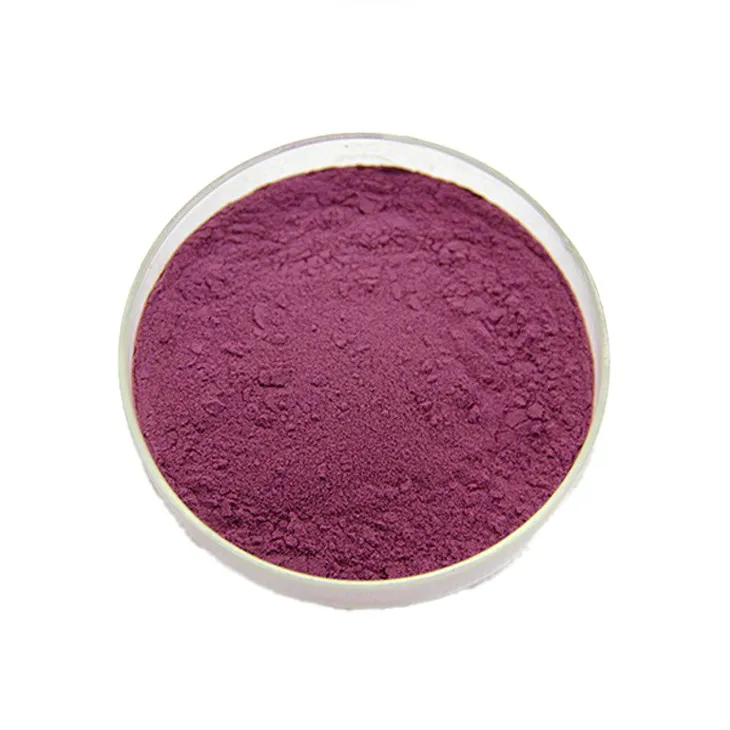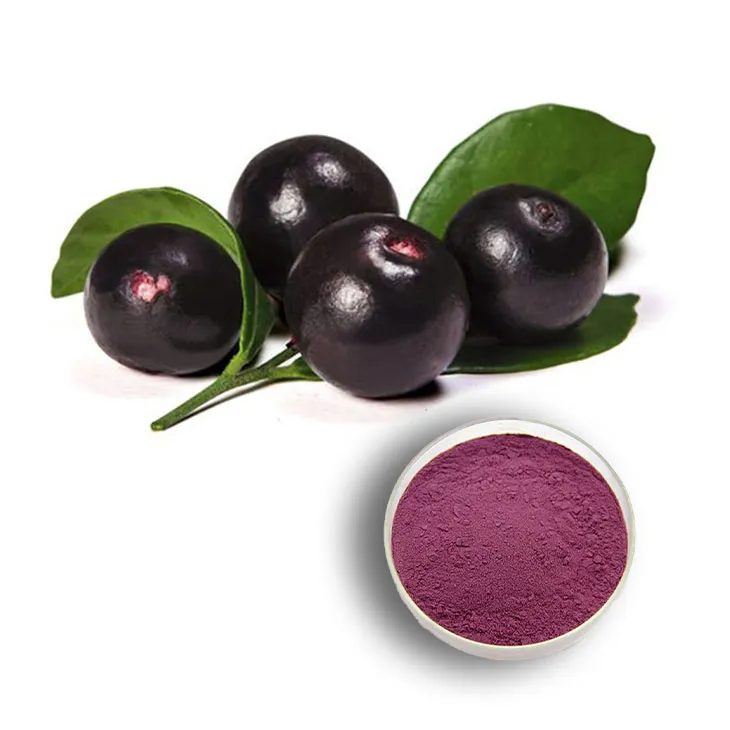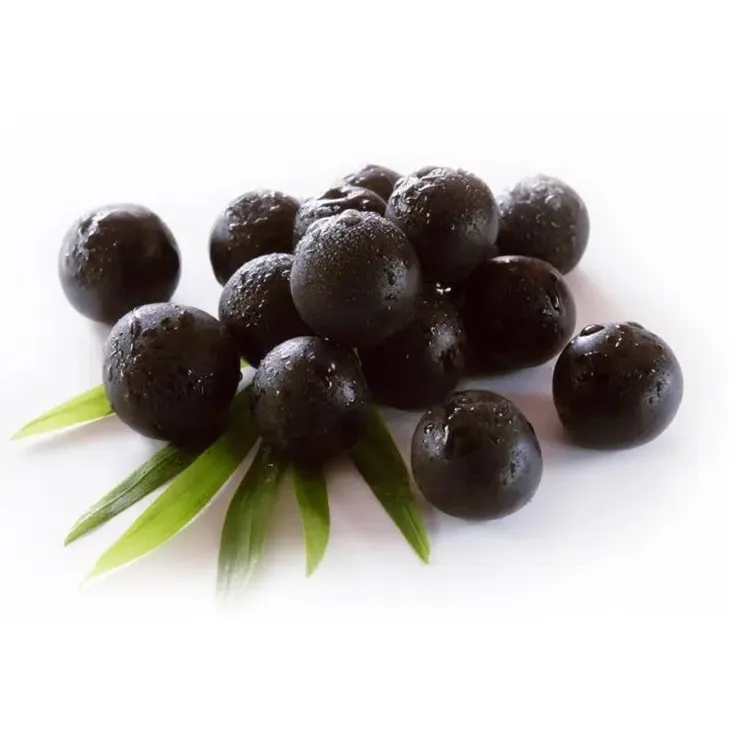- 0086-571-85302990
- sales@greenskybio.com
Supercritical Carbon Dioxide Extraction of Acai Berry Extract.
2024-11-28

1. Introduction to Acai Berry
The Acai berry, native to Brazil, has gained significant attention in recent years due to its remarkable nutritional composition. It is a small, purple fruit that grows on the Acai palm tree. This berry is rich in a variety of nutrients, making it a highly sought - after ingredient in many industries.
The Acai berry is renowned for its high antioxidant content. Antioxidants play a crucial role in protecting the body against oxidative stress, which is associated with various diseases and aging. In addition to antioxidants, it also contains essential vitamins such as vitamin A, C, and E. These vitamins contribute to maintaining healthy skin, eyes, and the immune system.
Another important component of the Acai berry is its healthy fats. The berry contains monounsaturated and polyunsaturated fats, which are beneficial for heart health. These fats can help in reducing bad cholesterol levels and maintaining proper blood lipid profiles.

2. Traditional Extraction Methods and Their Limitations
Before the advent of supercritical carbon dioxide extraction, traditional extraction methods were used to obtain Acai Berry Extract. These methods include solvent extraction, which is one of the most common traditional techniques.
Solvent extraction involves the use of organic solvents such as ethanol or hexane to dissolve the desired compounds from the Acai berry. However, this method has several drawbacks. Firstly, the use of organic solvents can be a safety hazard as many of these solvents are flammable and volatile. There is also a risk of solvent residues remaining in the final extract, which can be harmful if consumed or used in products.
Another traditional method is steam distillation. While it is effective for extracting volatile compounds, it may not be suitable for extracting non - volatile components present in the Acai berry. Additionally, steam distillation can cause thermal degradation of some of the heat - sensitive compounds in the berry, leading to a loss of their bioactivity.

3. Supercritical Carbon Dioxide Extraction: An Overview
Supercritical carbon dioxide extraction is a relatively new and advanced technique that has shown great potential in the extraction of Acai Berry Extract. Carbon dioxide (CO₂) is a non - toxic, non - flammable, and inexpensive gas. When carbon dioxide is subjected to specific temperature and pressure conditions, it reaches a supercritical state.
In the supercritical state, CO₂ has properties that are intermediate between a gas and a liquid. This unique state allows for excellent mass transfer and solubility characteristics. It can penetrate into the matrix of the Acai berry and selectively dissolve the desired compounds, such as antioxidants, vitamins, and healthy fats.
The process of supercritical CO₂ extraction involves the following steps:
- First, the Acai berries are prepared. This may include cleaning, drying, and grinding to a suitable particle size.
- The prepared berries are then placed in an extraction vessel. Carbon dioxide is then pumped into the vessel and brought to the supercritical state by adjusting the temperature and pressure.
- The supercritical CO₂ extracts the desired compounds from the berries. The extract - laden CO₂ is then passed through a separator where the pressure is reduced, causing the CO₂ to return to its gaseous state and leaving behind the concentrated Acai Berry Extract.

4. Advantages of Supercritical CO₂ Extraction for Acai Berry
Selectivity: One of the major advantages of supercritical CO₂ extraction for Acai berry is its selectivity. The extraction process can be fine - tuned by adjusting the temperature, pressure, and flow rate of the CO₂. This allows for the extraction of specific compounds while leaving behind unwanted substances. For example, it can target the extraction of antioxidants without extracting large amounts of unwanted plant fibers or other non - bioactive components.
Environmentally Friendly: As mentioned earlier, supercritical CO₂ extraction is an environmentally friendly option. Since CO₂ is a natural gas, it does not contribute to ozone depletion or global warming as some organic solvents do. Also, the CO₂ used in the extraction process can be recycled and reused, reducing waste and environmental impact.
Product Quality: The Acai berry extract obtained through supercritical CO₂ extraction retains its bioactive components in a more intact form compared to traditional extraction methods. The gentle extraction conditions prevent thermal degradation of heat - sensitive compounds and ensure that the nutritional and functional properties of the extract are preserved. This makes the extract highly suitable for applications in the nutraceutical, cosmetic, and food industries.
Low Residue: Supercritical CO₂ extraction results in a very low residue level in the final extract. Since there is no need for organic solvents, there is no risk of solvent residues, which is a significant advantage when the extract is used in products for human consumption or topical application.

5. Applications of Acai Berry Extract Obtained by Supercritical CO₂ Extraction
5.1 Nutraceutical Industry
In the nutraceutical industry, the Acai berry extract is highly valued for its health - promoting properties. The high antioxidant content in the extract can help in preventing chronic diseases such as heart disease, cancer, and neurodegenerative disorders. It can be formulated into dietary supplements in the form of capsules, tablets, or powders. Consumers are increasingly interested in natural and plant - based supplements, and Acai berry extract fits well into this trend.
5.2 Cosmetic Industry
The cosmetic industry also benefits from the use of Acai berry extract. The antioxidants in the extract can protect the skin from damage caused by free radicals, which are responsible for premature aging, wrinkles, and dull skin. It can be incorporated into various cosmetic products such as creams, lotions, serums, and masks. The healthy fats in the extract can also provide moisturizing and nourishing effects to the skin, leaving it soft and supple.
5.3 Food Industry
In the food industry, Acai berry extract can be used as a natural colorant and flavor enhancer. Its rich purple color can add an attractive hue to food products such as juices, smoothies, and desserts. The unique flavor of the Acai berry can enhance the taste of these products. Additionally, due to its nutritional value, it can be added to functional foods, providing an extra health boost.
6. Conclusion
Supercritical carbon dioxide extraction has revolutionized the extraction of Acai berry extract. It offers numerous advantages over traditional extraction methods, including selectivity, environmental friendliness, high product quality, and low residue. The resulting extract has a wide range of applications in the nutraceutical, cosmetic, and food industries. As research and technology continue to advance, it is expected that supercritical CO₂ extraction will further improve and expand its role in the extraction of valuable compounds from the Acai berry and other natural sources.
FAQ:
What are the main advantages of supercritical CO₂ extraction for Acai berry extract?
Supercritical CO₂ extraction for Acai berry extract has several main advantages. Firstly, it can operate in a state where carbon dioxide has properties between a gas and a liquid, enabling precise control over the extraction process. Secondly, it can selectively extract the desired compounds from the Acai berry while excluding unwanted substances. Moreover, it is more environmentally friendly compared to traditional methods as it reduces the use of organic solvents. Also, the resulting extract retains its bioactive components, which is highly valuable for various industries.
Why is the Acai berry so special?
The Acai berry is special because it is native to Brazil and has a rich nutritional profile. It contains high levels of antioxidants, vitamins, and healthy fats, which make it a valuable ingredient in many applications such as nutraceuticals, cosmetics, and food.
How does supercritical CO₂ extraction selectively extract compounds?
Supercritical CO₂ extraction can selectively extract compounds because in its supercritical state, carbon dioxide has unique solvating properties. These properties can be adjusted, for example, by changing the pressure and temperature. By carefully controlling these parameters, it is possible to dissolve and extract only the desired compounds from the Acai berry while leaving other substances behind.
What makes supercritical CO₂ extraction more environmentally friendly?
Supercritical CO₂ extraction is more environmentally friendly mainly because it reduces the use of organic solvents. Organic solvents can be harmful to the environment if not properly disposed of. In contrast, carbon dioxide is a natural gas that is non - toxic and can be easily recycled in the extraction process, minimizing environmental impact.
In which industries is the Acai berry extract obtained by supercritical CO₂ extraction used?
The Acai berry extract obtained by supercritical CO₂ extraction is used in the nutraceutical, cosmetic, and food industries. In the nutraceutical industry, its bioactive components can provide various health benefits. In the cosmetic industry, it can be used for its antioxidant and skin - nourishing properties. In the food industry, it can be added to products for its nutritional value.
Related literature
- Supercritical Fluid Extraction of Bioactive Compounds from Acai Berry: Process Optimization and Quality Analysis"
- "Supercritical Carbon Dioxide Extraction of Antioxidants from Acai (Euterpe oleracea Mart.) Fruit: A Review"
- "Advances in Supercritical Fluid Extraction of Acai Berry for Nutraceutical and Cosmetic Applications"
- ▶ Hesperidin
- ▶ citrus bioflavonoids
- ▶ plant extract
- ▶ lycopene
- ▶ Diosmin
- ▶ Grape seed extract
- ▶ Sea buckthorn Juice Powder
- ▶ Beetroot powder
- ▶ Hops Extract
- ▶ Artichoke Extract
- ▶ Reishi mushroom extract
- ▶ Astaxanthin
- ▶ Green Tea Extract
- ▶ Curcumin Extract
- ▶ Horse Chestnut Extract
- ▶ Other Problems
- ▶ Boswellia Serrata Extract
- ▶ Resveratrol Extract
- ▶ Marigold Extract
- ▶ Grape Leaf Extract
- ▶ blog3
- ▶ blog4
-
Nature's Bounty Okra Extract.
2024-11-28
-
Chinese Oyster Peptide Powder Factories.
2024-11-28
-
The best organic L - carnitine.
2024-11-28
-
Certified organic acerola cherry extract.
2024-11-28
-
Wholesale β - carotene suppliers.
2024-11-28
-
Chinese lemon balm extract factories.
2024-11-28
-
100% Pure Organic Bitter Melon Extract.
2024-11-28
-
Polygonum multiflorum extract
2024-11-28
-
Phellodendron Extract
2024-11-28
-
Hesperidin
2024-11-28
-
Giant Knotweed Extract
2024-11-28
-
Berberis aristata Extract
2024-11-28
-
Senna Leaf Extract
2024-11-28
-
Yohimbine Bark Extract
2024-11-28
-
Yellow Pine Extract
2024-11-28
-
Moringa powder
2024-11-28
-
Oyster Mushroom Extract Powder
2024-11-28





















